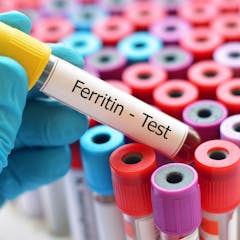
Articles on Iron deficiency
Displaying all articles

Heavy periods are one of the leading causes of iron deficiency and anaemia.

Despite their small size, infants and children actually require about the same amount of iron as adults, to help them grow. Many aren’t getting enough.

Among young children, adolescents and adult women, anemia strikes 1 in 3 globally. Most cases are driven by dietary iron deficiency, red blood cell disorders and untreated tropical diseases.

Many plant-based foods are rich in iron, but they also contain high amounts of fibre and phytates, which reduce the body’s capacity to absorb the essential nutrient.

Getting enough iron is tricky – even if we eat enough, we might not absorb enough. But diversifying the menu and looking for fortified foods can help.

Researchers have explored many factors that affect iron levels, including diet and exercise, but we don’t yet fully understand the role women’s reproductive hormones play in regulating iron uptake.

From orange juice, to tea and coffee, to alcohol — different drinks can have different effects on iron absorption. This is worth thinking about if your iron levels are low.

In some communities, over a quarter of the children were misclassified as iron replete whereas they were iron deficient.

Feeling tired and out of energy? Talk to your GP about checking your iron level.

Iron deficiency affects more than one in ten Australian women before they reach menopause. Better dietary choices can be part of the solution.

In Kenya, not much attention has been paid to addressing pregnant women’s nutritional needs. This has exposed a gap in efforts to improve maternal and child health.

Micronutrient deficiencies are not well understood as an aspect of malnutrition. The problem is that such deficiencies increase a range of health risks.
